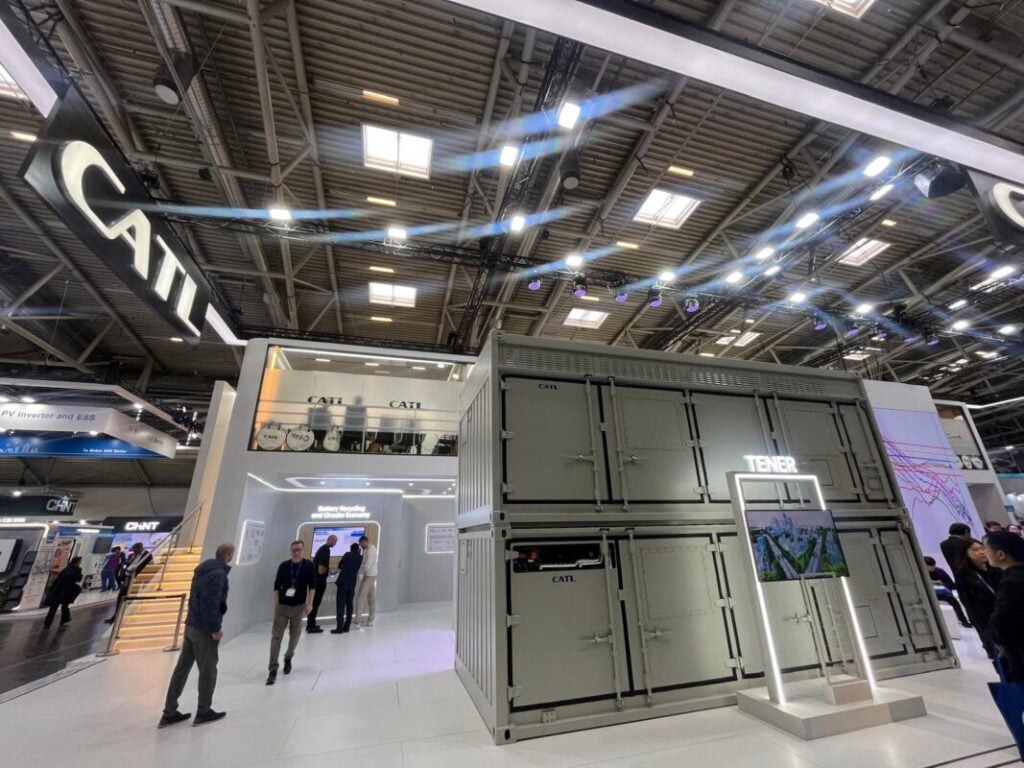BESS industry starts to diversify away from 20-foot container, back to modular - Energy-Storage.News
Shifting Trends in BESS Design
The article reports on a noticeable shift within the BESS industry, moving away from the previously dominant 20-foot container standard towards more modular designs. This trend is being driven by several factors, including changes in battery cell sizes and a focus on improved energy density.
Key Players and Innovations
- CATL: Introduced the Tener Stack BESS solution, a 20-foot unit composed of two stacked smaller modules offering 9MWh capacity.
- Hyperstrong: Launched a 10-foot modular product, the Hyperblock M, with 6.251MWh capacity, designed for diverse transportation.
- Fluence: Released its first AC block solution, a modular design slightly larger than a 20-foot container.
These changes are partly attributed to the evolution of battery cell sizes. Many manufacturers are moving to larger cells (600Ah or higher), allowing for re-designed, more efficient systems. The increased modularity allows for higher energy densities while avoiding the transportation constraints associated with large, single-unit systems.
Industry Perspectives
Experts highlight that the move towards modularity is a realization that 'bigger isn't always better,' allowing for more flexible and efficient designs. While the 20-foot container remains popular (with examples cited from Envision, IPS, Saft, and Powin), the trend toward modularity is a significant development in the BESS sector.
CATL’s new Tener Stack BESS solution, covered by Energy-Storage.news yesterday, is 20-foot in footprint but is made up of two stacked shorter units totalling around 4m in total height to offer a capacity of 9MWh per 20-foot unit. It was revealed for the first time at ees Europe.
Hyperstrong, the largest system integrator in China and now expanding internationally, has launched a 10-foot product with an energy storage capacity of 6.251MWh, the Hyperblock M. It said the 24-tonne module weight supports maritime, land, and railway transportation. The company launched it in late 2024 but ees Europe was the first showcase for it in Europe.
A few months ago Fluence launched its first AC block solution, with a modular design that, when put together, is slightly larger than a 20-foot container.
In fact the trend back to modular products after years of convergence to 20-foot was predicted last year by Marek Kubik, formerly of Fluence, now director of BESS in ENOWA, NEOM’s clean energy and water company.
Part of these launches are down to a divergence in the cell size that battery suppliers are offering, with the previous 20-foot-dominated generation of products all built around the 280Ah/314Ah cell size, whereas now many are going up to around 600Ah or even higher than 1000Ah.
The transformation in cell sizes could offer an opportunity to reinvent designs entirely, and the chairman of REPT Dr Cao Hui said having unique technology is important, which may go some way to explaining a diversification of product designs.
Speaking to Energy-Storage.news he said: “Everyone has their own opinion and tries to develop their technology the best, they can’t always copy each other. The IP is very important, if you just follow everybody else’s technology you might have problems.”
Another driver is that shifting to modular solutions like CATL, Fluence and Hyperstrong mean providers can offer ever-higher energy densities by footprint but get around the shipping restrictions they’d face by packing everything into the 20-foot container. Both CATL and Hyperstrong emphasise this aspect in their product’s descriptions.
As one source put it discussing the re-emergence of modular products: “I think people have come to the realisation that bigger is not always better.”
The 20-foot container product still appears to be the most popular choice for providers, with ees Europe product announcements from Envision, IPS, Saft and Powin sticking with that size, as covered by Energy-Storage.news. Envision and IPS’ are noteworthy for their energy densities of around 8MWh, on par with others we’ve seen within that container size.
 CATL’s Tener Stack on show at ees Europe. Image: Solar Media.
CATL’s Tener Stack on show at ees Europe. Image: Solar Media. Was this article displayed correctly? Not happy with what you see?
If you often open multiple tabs and struggle to keep track of them, Tabs Reminder is the solution you need. Tabs Reminder lets you set reminders for tabs so you can close them and get notified about them later. Never lose track of important tabs again with Tabs Reminder!
Try our Chrome extension today!
Share this article with your
friends and colleagues.
Earn points from views and
referrals who sign up.
Learn more
Save articles to reading lists
and access them on any device